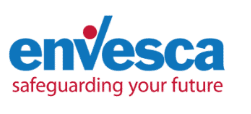Working at height means work where if a person could fall a distance, it would cause personal injury.

What’s It About?
Working at height means work where if a person could fall a distance, it would cause personal injury. You are working at height if you:
work above ground/floor level
could fall from an edge, through an opening or fragile surface
could fall from ground level into an opening in a floor or hole in the ground
This Working at Height course will provide you with the information you need to be able to deal with working at height risks. Also, it will teach you how to implement control measures successfully. It will also help you to select appropriate equipment in accordance with the Work at Height Regulations 2005.
What Will You Gain?
By completing this Working at Height course, you will be aware of the dangers of working at height. You will also know how to manage and control the associated risks.
Furthermore, you will understand the responsibilities of both the employer and the employee under the Working at Height Regulations.
On returning to the workplace, you will be able to undertake risk assessments and follow the correct safety procedures. You will know how to use the right access equipment to ensure you carry out your work safely.
Who Should Attend?
This Working at Height course is ideal for anyone whose job involves working at height. For example, professions such as building contractors, telecom engineers and self-employed window cleaners.
It is also suitable for anyone involved in activities such as changing light bulbs, stacking shelves and unloading vehicles.
Why’s It Important?
The Working at Height Regulations 2005 (WAHR) came into force on the 6th April 2005. The regulations apply to all work where there is a risk of a fall which is liable to cause injury and place-specific duties on employers, self-employed and any person that controls the work of others.
Falls from height are one of the biggest causes of workplace fatalities and major injuries. Common causes are falls from ladders and through fragile roofs. The purpose of WAHR is to prevent death and injury from a fall from height.
Key Topics
Definitions
Legal responsibilities
Five steps of a risk assessment
Ladders and stepladders
Specialist equipment
Types of protection
The Envesca Story
Back in 1996, in a small home office in Gloucester, Envesca was born. Sue and Simon Ellis created the business to deliver first-class food hygiene training.
With a vision of championing a safe and healthy environment and determined to build a company renowned for its exceptional customer service. They set about creating a business that offered customers a positive learning environment.
In addition, they created learning that engaged, inspired, and encouraged candidates and delivered outstanding results. Today it’s these same principles that underpin everything Envesca does.
© 2025 coursetakers.com All Rights Reserved. Terms and Conditions of use | Privacy Policy